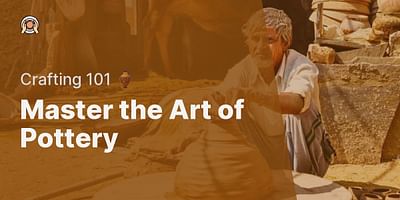Henry Clayfield is a master potter with over 20 years of experience in the world of clay crafts. He is known for his beautiful and functional pottery pieces, as well as his innovative techniques in glazing and firing. Henry enjoys sharing his expertise with others and helping them develop their skills in pottery making.
Learning to use a pottery wheel can be both exciting and challenging. As a beginner, it's natural to wonder how difficult it is to master this skill. Let me break it down for you.
Using a pottery wheel requires practice and patience. It's not something you can learn overnight, but with dedication and the right techniques, you can become proficient in no time. The difficulty level may vary depending on your previous experience with clay and your ability to adapt to new skills.
If you're completely new to working with clay, it may take some time to get used to the feel and texture of the material. Clay has a unique consistency, and learning how to manipulate it on the wheel can be a bit challenging at first. However, with practice, you'll develop a better understanding of how the clay responds to your touch.
One of the key factors in learning to use a pottery wheel is hand-eye coordination. You'll need to coordinate the movement of your hands with the rotation of the wheel to shape the clay. This can take some time to master, but don't worry, it's a skill that can be developed with practice.
Another aspect to consider is the different techniques involved in pottery wheel throwing. From centering the clay to pulling up the walls and shaping the vessel, each step requires precision and control. It's important to learn these techniques gradually, starting with the basics and gradually progressing to more advanced skills.
To make your learning journey easier, there are plenty of resources available. You can find pottery wheel tutorials online, attend pottery classes, or even invest in instructional books or DVDs. These resources can provide you with step-by-step guidance and tips to improve your skills.
It's worth mentioning that the type of pottery wheel you use can also impact the learning process. There are various types of pottery wheels available, such as electric wheels and kick wheels. Electric wheels are generally easier to use as they provide a consistent rotation speed, while kick wheels require more physical effort and control.
In conclusion, learning to use a pottery wheel may have its challenges, but with practice, patience, and the right resources, it's definitely achievable. Don't be discouraged if you don't get it right away – remember that pottery is an art form that takes time to master. Embrace the learning process, experiment with different techniques, and enjoy the journey of creating beautiful pottery on the wheel.















